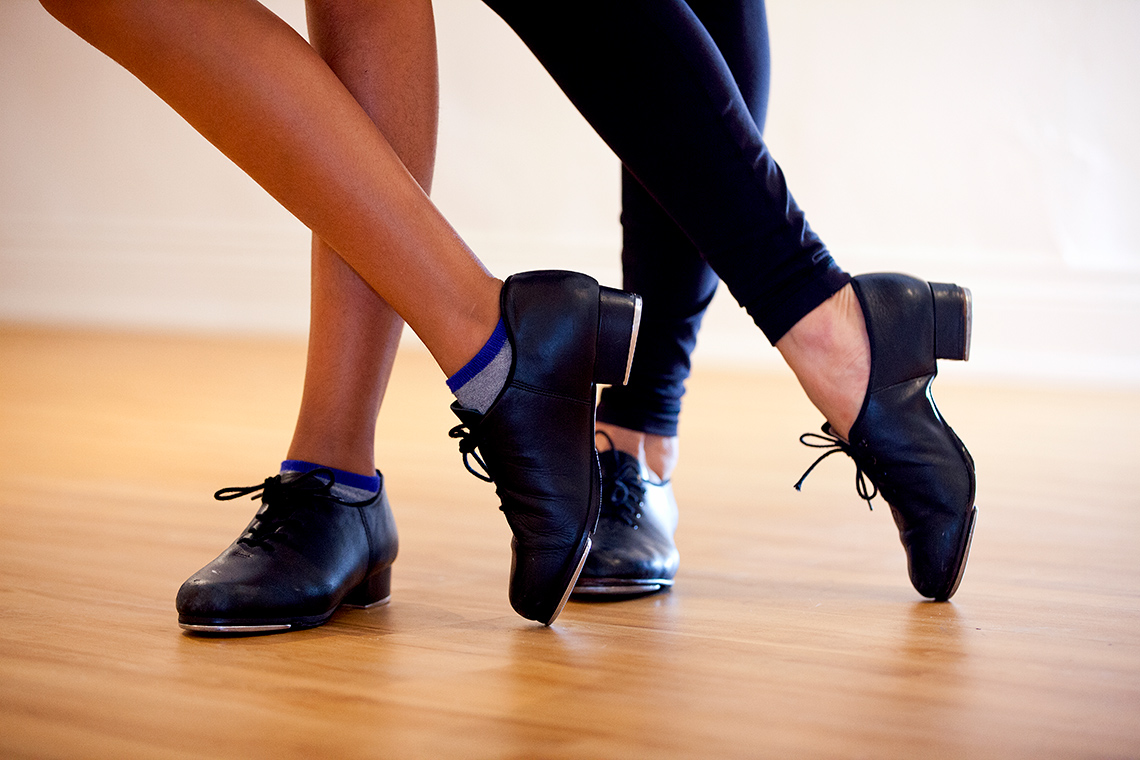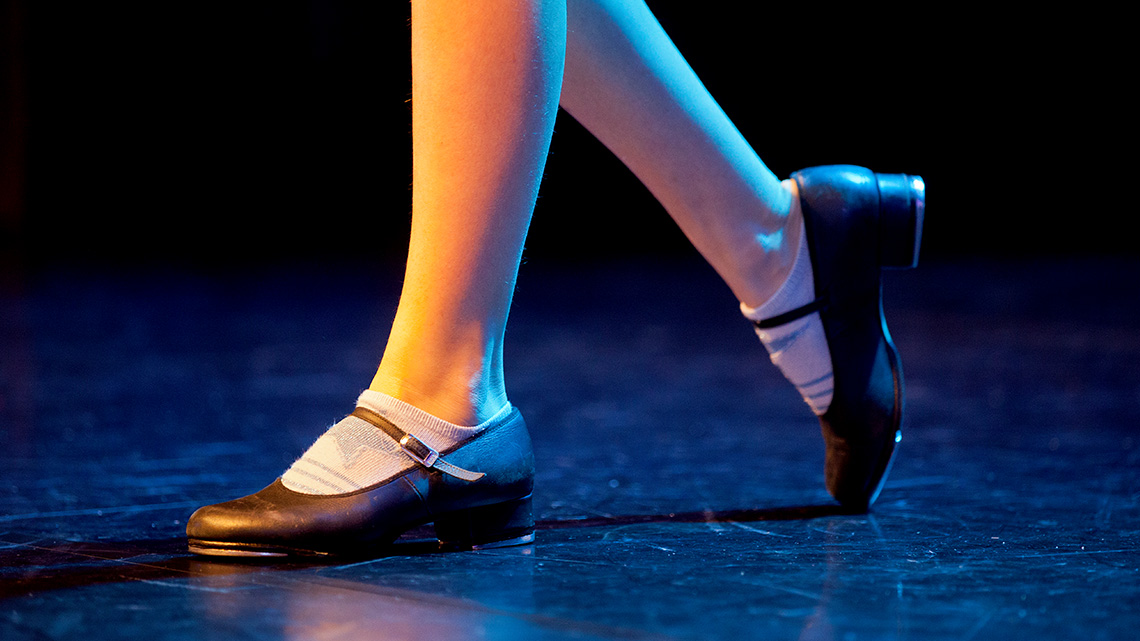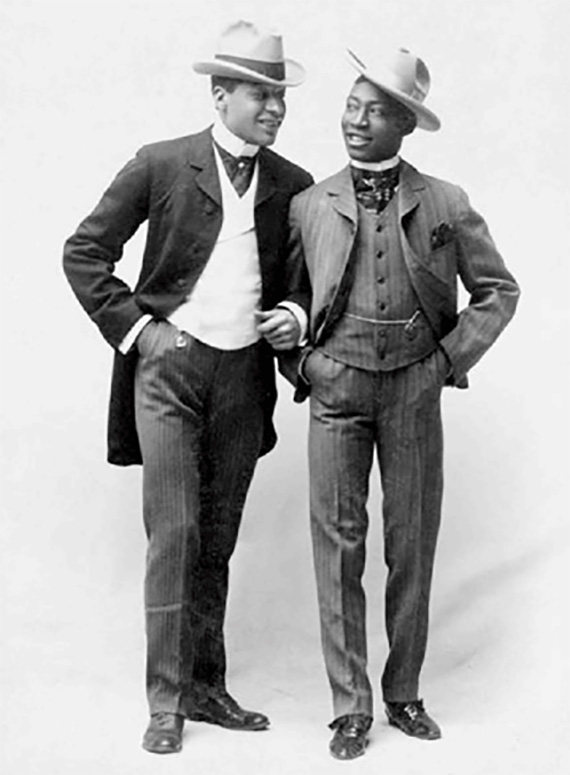Minds On
Today’s vocabulary
Press the following tabs to access the definitions of learning concepts for this learning activity.
Let’s get started!
Dance was created thousands of years ago. It exists in many cultures and religions for a wide variety of purposes, such as to entertain, share stories, and celebrate. Different styles of dance have different movements, techniques, and even costumes or clothing. Let’s explore an example of one style of dance: tap dance!

A teacher with the following words in a speech bubble: “While the content in this learning activity is aligned to the curriculum, some content may be sensitive to individual learners. Consider reaching out to a trusted adult to share your feelings and questions.”
Northwest Tap Connection is a dance studio in Seattle, founded by Melba Mitchell-Ayco, dedicated to using tap dance to explore social justice issues. Let’s explore a short video of Mitchell-Ayco discussing the studio.
Access this video with Mitchell-Ayco to learn more about tap dance.
Press ‘Description’ to access the description of this video.
DescriptionIn this video, Melba Mitchell-Ayco describes how she uses tap at her dance studio to empower youth. She says: “I strive to make sure that children understand that it [tap dance] is a dance form that comes out of Black culture. It comes out of protest and we have to appreciate it, embrace it and protect it as we pass it down.” As she speaks, various images of children and teachers engaged in tap dancing are shown on screen.

Pause and Reflect
Pause and reflect
- What, if anything, do you know about tap dance?
- If tap dance is new to you, what are your initial impressions of the video?
- The founder of the studio Melba Mitchell-Ayco, explains that tap is a dance form that “comes out of Black culture” and that it “comes out of protest.” What do you think this means?
- Does tap dance remind you of any other dance forms you are familiar with?
Record your responses using a method of your choice.
Action
Get ready, get set…
Task 1: Exploring the origins of tap

The beginning of tap dance
Dance is impacted by a variety of things. Economic, political, and social factors often influence the emergence of various dance styles. Africans were enslaved and brought to present-day America and the Caribbean in the 1600s for economic reasons. They were used to working on plantations as free labour to increase the profits of the plantation owners. Africans brought with them their cultural and religious rituals, many of which included dance and drums. When the Slave Laws were passed in 1740, drumming was prohibited for fear it would spark an uprising. In response, they substituted clapping and percussive footwork for the drums to keep their cultural and religious traditions. Dance was an important element of social connection for them.
Did You Know?
Did you know?
George Walker (1873-1911) was a famous vaudeville performer with his friend Bert Williams (1874-1922). They popularized a dance called the cakewalk. They also created the first African American full-length musical to open on Broadway. Walker and Williams were successful business owners as well, providing many job opportunities for their fellow Black performers.

Tap dance gained popularity after the Civil War as part of travelling minstrel shows, which brought this style of dance to a wider audience. These shows were largely performed by white people and were demeaning and hurtful towards Black people. These shows included elements of discrimination and prejudice. For example, the white performers would often darken their skin using polish and cork, as an attempt to mimic and create exaggerated stereotypes of Black people.
By the turn of the 20th century, these minstrel shows were largely replaced by Vaudeville shows and became a major output of the Harlem Renaissance in the 1920s and 30s.
Press the following tab to access an explanation of Harlem Renaissance.

Tap in the movies
In the 1930s and 40s, tap dance continued to gain popularity when tap dance sequences became common in many movies. Stars of the time like Shirley Temple, Gene Kelly, and Fred Astaire were all known for their tap dancing. Because of ongoing segregation in the film industry, Black dancers were rarely featured on screen. This resulted in two distinct styles of tap emerging. Black dancers continued with their tradition of rhythmic tap, and a more balletic, Broadway version of tap dance emerged among white dancers. In the movies, Tap became secondary to the narrative storyline and the jazz rhythms were less important. Eventually, tap dance fell out of popularity for several decades.

American actor and dancer Gene Kelly (1912–1996) as Don Lockwood in "Singin’ In The Rain," directed by Kelly and Stanley Donen, 1952.
Tap revival
In the 1980s, tap dance underwent a revival when it took centre stage on Broadway with shows like The Tap Dance Kid; 42nd Street. More recently, tap dancers such as Savion Glover have created tap works for a new generation, such as Bring in ‘Da Noise, Bring in ‘Da Funk, making space for Black dancers and choreographers in professional theatre.

Go!
You have explored how tap dance originated from African people in present-day America and how the dance form evolved and became more widely recognized through Minstrel shows, Vaudeville, and the Harlem Renaissance. Tap dance gained increasing popularity and emerged into two distinct styles through its portrayal in Hollywood movies. It fell out of popularity and has seen a recent revival on Broadway. Use this information gathered so far, to match the cause to the effect it had on tap dance.
For each statement, select whether it is a cause or an effect.
Consolidation
Putting it all together
Task 1: Independent investigation
Press the following tabs to access dance forms that you would like to explore further.
Investigate the connection between Capoeira and enslaved Africans in Brazil.
Investigate how this dance form emerged through contact between First Nations peoples and European fur traders.
Investigate how the rise of the middle class in the late 19th century contributed to the emergence of modern dance.
Using tap dance as a model, investigate the social, political, and/or economic factors that led to the emergence or evolution of the dance form.
When researching your chosen dance form, it is important that you begin your search using websites, videos, audio recordings, or print resources from the community you are studying, Canadian encyclopedia websites, or Canadian Arts organizations’ websites.
Portfolio
Portfolio
Thinking critically about using websites
Websites ending with .com, .org, and .net can be purchased and used by any person. Be careful when using these websites and ask yourself if these websites are credible or have bias. The ending .org is usually used by non-profit organizations, which may have an agenda of persuasion rather than education.
Websites ending in .edu are reserved for colleges and universities. Canadian websites have a .ca ending. It is important to consider using credible Canadian websites for research when possible!
Complete the Thinking Critically in your notebook or using the following fillable and printable document. If you would like, you can use speech-to-text or audio recording tools to record your thoughts. Consider adding your work to your portfolio.
Reflection
As you read the following descriptions, select the one that best describes your current understanding of the learning in this activity. Press the corresponding button once you have made your choice.
I feel…
Now, expand on your ideas by recording your thoughts using a voice recorder, speech-to-text, or writing tool.
When you review your notes on this learning activity later, reflect on whether you would select a different description based on your further review of the material in this learning activity.
